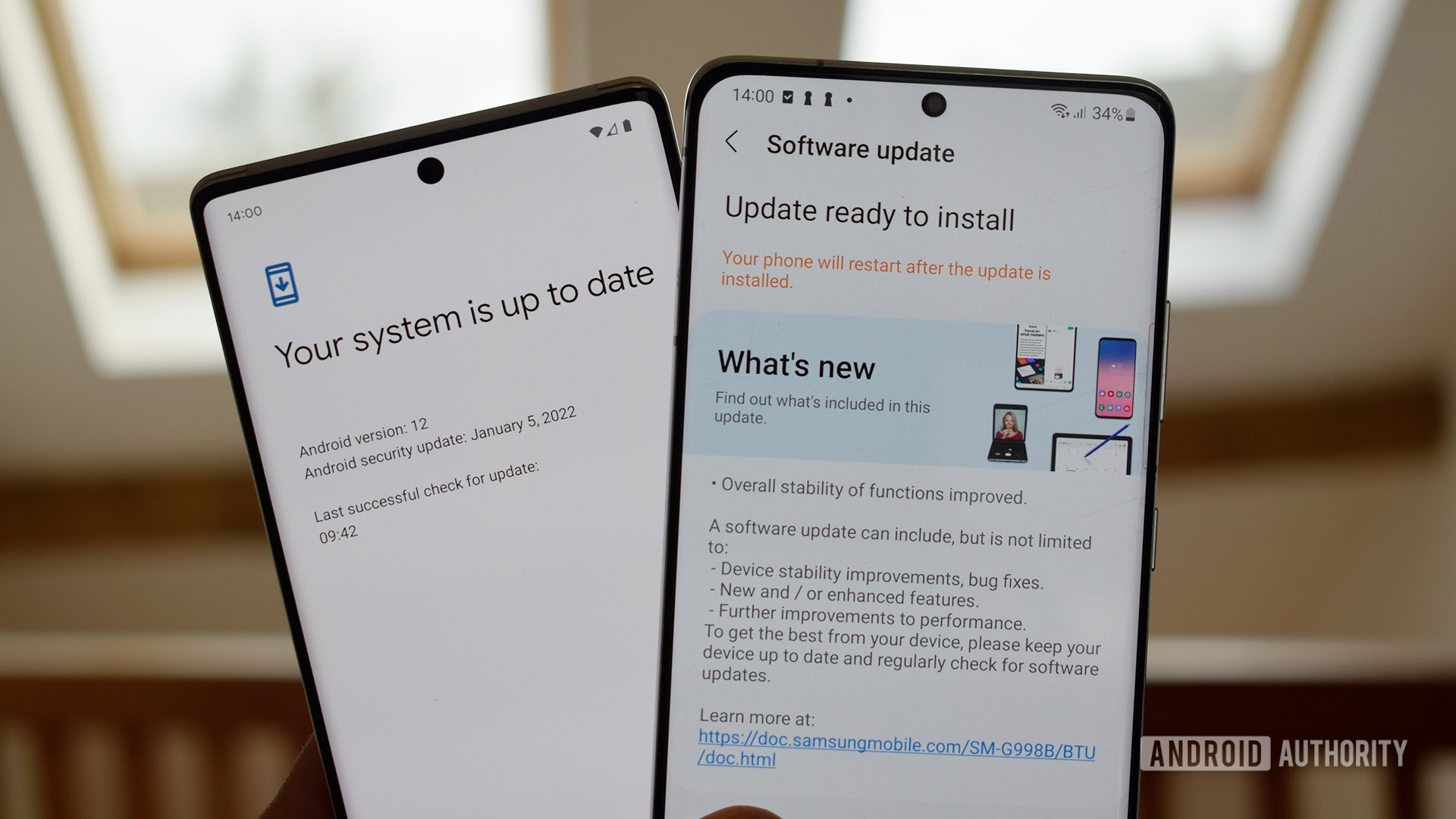We asked, you told us: On Seamless Updates, you’re split right down the middle

Robert Triggs / Android Authority
What are Seamless Updates? When your phone receives an update — say, a new security patch or even a brand new version of Android — it can go one of two ways. The first is the “normal” way, in which your phone downloads the update, shuts down, installs the update, and then reboots. This can take up to 10 minutes to complete, and your phone is inoperable during that time. The more modern method is known as Seamless Updates. In this scenario, your phone downloads and installs the update all in the background. It takes longer, but you can still use your phone during the whole process, with only a quick reboot needed at the end.
Do you prefer conventional updates or Seamless Updates?
Results
These results were very surprising to us. Naturally, we assumed our readers would strongly prefer Seamless Updates. It’s a newer method that allows you to continue using your phone uninterrupted, at least until you get to the necessary reboot. However, it appears that our readers are split right down the middle on this topic.
The biggest difference between the two methods is the amount of time it takes. For example, a Pixel device could take upwards of 30 minutes to download and install an update in the background. Yes, you can use your phone during that process, but that same update could take just five minutes on a Samsung phone. It appears some people prefer to get it over with quickly.
However, people who like rooting their phones also appreciate Seamless Updates for the benefits they bring, so this might be more complicated than that. Likewise, Seamless Updates require something called A/B partitioning, which takes up more space on your internal storage. This might also be a reason to prefer conventional updates.
Regardless, don’t take our word for it. We’ve collected some of your comments on the situation below.
Your comments
PJay Snowden: Seamless is better for rooting…because you can unroot, update…and the patch the other partitions. Not that this would work with Samsung anyway…because rooting disables OTA.
Mac Jackson: Oh no what will I do if I have to give up use of the phone for a few minutes a month for a sec update or 15 minutes for a UI update…the world just ended.
SyCoREAPER: A/B is a waste of space and traditional works perfectly fine. 5 minutes at most to do an update and if it’s a major version bump, 7 minutes. I’ll keep traditional partitioning. Plus A/B would probably kill ODIN compatibility. Pass.
disqus_d1b9jeAcZN: It’s a pretty minor future to me. Definitely not a must have. Waiting for my phone to update usually isn’t a big deal because I can choose when I want to restart anyway. I’ll just pick a moment when I’m not busy. The rollback option is nice.
chris722: I’m all for seamless updates. Samsung phones already require a ton of memory as it is. Plus it just seems more efficient to me. Extra storage isn’t a deal breaker to me. Like I really want to wait 10 minutes for access to my phone when I could knock that down to 2.
Alfredo Lehar: what is not being discussed enough is that this update mode requires you to dedicate double the storage space for system files. should samsung adopt this update mode, the media would be all over it reporting on how much storage space is “wasted” on system files
For all the latest Technology News Click Here
For the latest news and updates, follow us on Google News.

